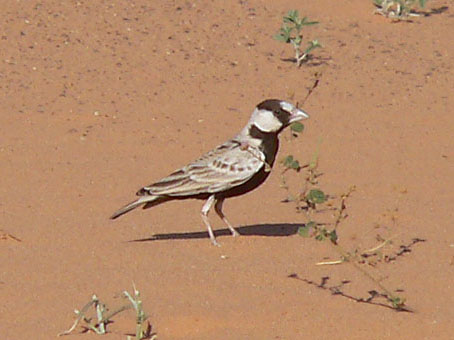Facts About Black-crowned sparrow-lark
The black-crowned sparrow-lark, known by several other names including the black-crowned finch lark, white-crested finch-lark, white-crested sparrow-lark, white-fronted finch-lark, and white-fronted sparrow-lark, is a captivating bird species that inhabits a wide range across northern Africa, stretching from Mauritania through the Middle East to northwestern India. These birds thrive in dry savannas and are classified into three recognized subspecies.
Adult males are easily recognizable by their striking black and white head patterns. In contrast, females are pale sandy brown with subtle markings, and juveniles resemble females but have buff-tipped feathers. These small birds measure about 11.5 to 12.5 cm in length. The male's song is quite variable, typically featuring a short series of melodious notes.
Black-crowned sparrow-larks favor arid and semi-arid plains with sparse vegetation, particularly sandy areas. They have adapted various strategies to regulate their body temperature and often form flocks outside the breeding season.
Breeding occurs during the summer months, usually prompted by rainfall. Their nests are shallow depressions lined with plant material, typically situated under shrubs. Both parents share the duty of incubating the 2 to 3 eggs, which hatch after about 11 to 12 days. The chicks fledge at around 21 to 22 days old and reach sexual maturity at about one year of age.
Their diet primarily consists of seeds, but they also consume insects and other invertebrates. While in the nest, chicks are fed primarily insects. The birds typically forage in the early morning and evening, mostly on the ground but occasionally catching flying insects.

 United Arab Emirates
United Arab Emirates